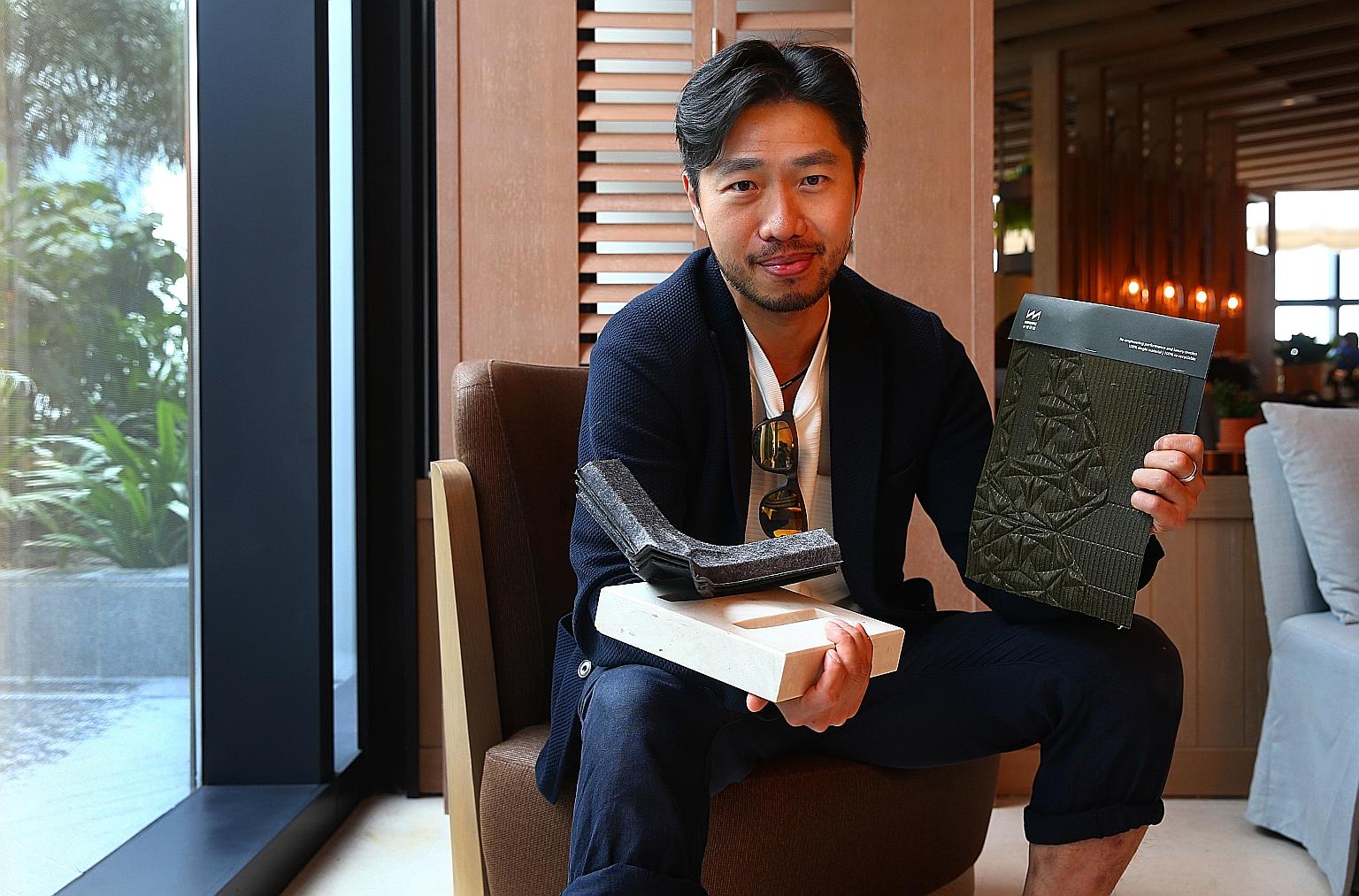From trash to treasure: One man's crusade to give discarded items new life
Sign up now: Get ST's newsletters delivered to your inbox

Mr Arthur Huang's upcycling company has created 1,200 new materials from trash. In his right arm is a concrete-like building material made from 2,000 cigarette butts. Sitting on it are air filters made from old clothes. The piece of fabric in his left hand is made from plastic bottles.
ST PHOTO: GAVIN FOO
Samantha Boh
Follow topic:
One man is on a crusade to turn the tide on trash.
For Mr Arthur Huang, what others see as unusable discards, he views as a resource that can keep on giving. He has turned cigarette butts into building materials, CDs and DVDs into frames for sunglasses, and plastic bottles into clothing, for instance.
Driven in part by a hatred of plastic, he started his mission 13 years ago to give discarded items new life, setting up upcycling firm Miniwiz in the heart of Taipei city.
"Hating plastic won't make it go away. So I decided to do something about it," said the 40-year-old architect and engineer.
Today, the company is worth more than US$100 million (S$131 million), and has gained international attention for various projects, including the construction of an exhibition hall using only plastic bottles in 2010.
Mr Huang was in town recently to give lectures on recycling trash as part of the National Geographic Live series, which aims to inspire people to care more about the earth.
He spoke about how he set up a laboratory within the Miniwiz office, which was dubbed the trash lab. There, a team of engineers, including those specialising in materials and chemistry, experiment on an array of trash, findings ways to turn them into new materials.
Over the years, they have created 1,200 of them.
The long-term challenge is getting designers, architects and other manufacturers to use these new materials, said Mr Huang. He believes that most manufacturers would be willing to switch to more sustainable materials if they are actively engaged.
"But we only have 100 people in the company. We can't afford to do that," he said.
Hence, he hopes to educate the next generation of creators.
In June, a database of Miniwiz's materials will be opened to 100 universities, and students will receive funding to create new products with the materials.
"Hopefully, through their success and experience in using the materials, they can influence their friends and even their professors," he said.
Ultimately though, the consumers matter most, he believes.
"What you pay for is what you vote for. But the problem is that people don't realise how much power they have," he said.
"If we can get a critical mass of consumers who care about sustainability, and who care less about convenience and cost, then I can bet you that most companies will shift to capture that market."

